A Lazy Girl’s Guide to Sourdough
Sourdough doesn’t have to be intimidating or require scientific calculations! I’m sharing all my tips on the lazy girls’ guide to sourdough. Easy, doable, fun and delicious!
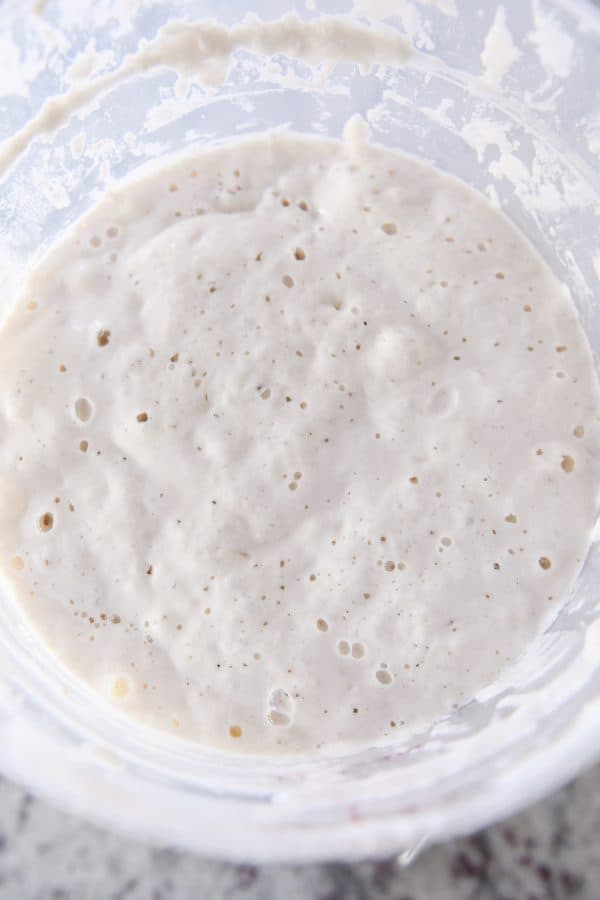
Ok, let’s talk sourdough.
It’s all the craze this year thanks to yeast shortages and quarantine baking, but it’s been on the rise (haha, get it? ok, sorry) for a lot of years, and in general, it’s been around for pretty much forever.
I’ve kept a sourdough starter off and on for about ten years now. I’m certainly NOT a sourdough expert, but I have figured out how to make sourdough easy and fun.
Contrary to popular belief and what a lot of sourdough experts will tell you, keeping a sourdough starter and baking with it doesn’t have to be intimidating, scientific, or intense.
Today I’m sharing my lazy girl’s guide to sourdough. If you’ve ever wanted to try keeping a sourdough starter, I’m here to help you realize you can do it (and it’s actually simple and stress-free!).
How to Get a Sourdough Starter
The most important component of sourdough is, of course, the starter.
You can get your hands on sourdough starter by asking around. You’d be surprised at how many people have sourdough starter languishing in their refrigerator. I got mine from a friend at church who has kept hers for years. So it’s strong and basically hard to kill.
I’ve heard you can also buy a sourdough starter online. I have no idea how good the dehydrated options are, so be sure to read reviews or do some research.
You can also make your own sourdough starter. I did this years ago when I was living in the middle of northern Minnesota nowhere. Although the starter lacked the flavor and strength of the one I have now (that’s older and been maintained longer), it’s definitely doable. Once you mix it up, it can be ready to use in about 5-8 days.
Here are some great resources for making your own sourdough starter:
- Simple Sourdough Starter
- King Arthur Flour Sourdough Starter Tutorial (King Arthur Baking has taught me almost everything I know about sourdough)
- 7 Easy Steps to Making Your Own Sourdough Starter (this article is slightly intense but if you like the science behind it, it’s informative)
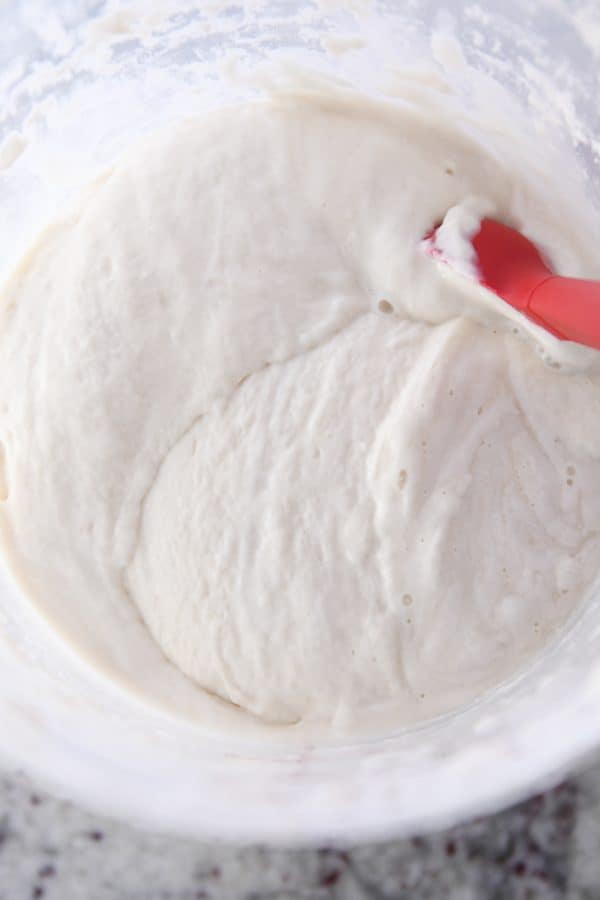
How to Maintain a Sourdough Starter
You’ll find a lot of information out on the webbies about how to do this. It can get overwhelming, and there are a lot of differing opinions about how much attention you need to show your sourdough starter and how often it needs to be fed.
There is hearsay that some sourdough starters even have names. Birth dates. And permanent living quarters.
Lucky little starters.
The lazy girl’s way to maintain a sourdough starter is to keep it in the refrigerator, sometimes forget about it, and feed it occasionally.
This is my general method:
- Pull my sourdough starter out of the refrigerator
- Scoop out the amount of sourdough I want to use in a recipe
- Feed the remaining sourdough starter
- Let it sit at room temp until it bubbles and doubles
- Pop it back in the refrigerator
Sometimes I use the starter and feed it 3X a week. Sometimes I don’t use it or feed it for over a month.
If you pull your starter out of the fridge and it has gray-tined liquid on top, don’t panic. That’s just a byproduct of the fermentation. You can pour it off or stir it back in. (However, if the liquid has an orange or pink tinge, toss the whole thing – that indicates it’s gone bad.)
If your starter has been left in the fridge for a long time but doesn’t have any signs that it’s gone bad, it’ll work just fine, but you may need to feed it several times over the course of a couple of days to get it back to full strength.
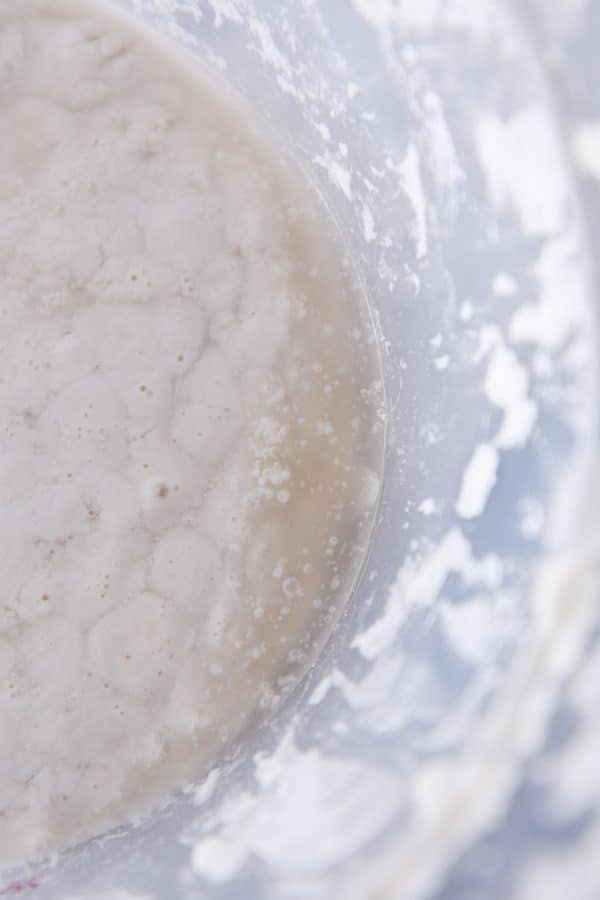
If you plan to bake with your starter every single day, keep it on the counter at room temperature and feed it every 12 hours. You’ll need to discard or use part of the starter before you feed it unless you want to end up with a bathtub sized batch of sourdough starter.
I’m not going to go into the intense how-to’s of daily sourdough maintenance, but here are some helpful links if you want to learn more about it:
- King Arthur Flour’s Guide to Maintaining a Sourdough Starter (again, an invaluable resource to me as I’ve learned over the years)
- Little Spoon Farm (she talks about ditching the typical 1:1:1 ratio and why the 1:4:4 method works for her)
- The Perfect Loaf’s Sourdough Maintenance Schedule (again, intense but informative)
How to Feed a Sourdough Starter
I use the 1:1:1 method for feeding my starter.
I always keep my sourdough starter in the same container and use my kitchen scale to quickly and easily figure out how much flour and water I need to add.
It’s way easier to do it this way than scoop it out into another bowl, figure out quantities, and wash a bunch of dishes.
I already know my container weighs 325 grams. (I keep that info on a post-it note inside my kitchen cupboard along with other helpful info like how many caramels can be wrapped from a triple batch and how many slices of watermelon can you get from one average sized watermelon and the perfect essential oil blend for stinky teenager feet; my kitchen cupboard notes are a wealth of info.)
- So I pop the container on the kitchen scale with whatever sourdough is left after I scooped some out to use, and I check the weight.
- If it weighs 865 grams, I know I have 540 grams of sourdough starter in there (865 grams minus the 325 grams that the container weighs).
- I tare out the scale to zero and add 540 grams of unbleached all-purpose flour.
- I tare the scale out to zero again and add 540 grams of room temperature water.
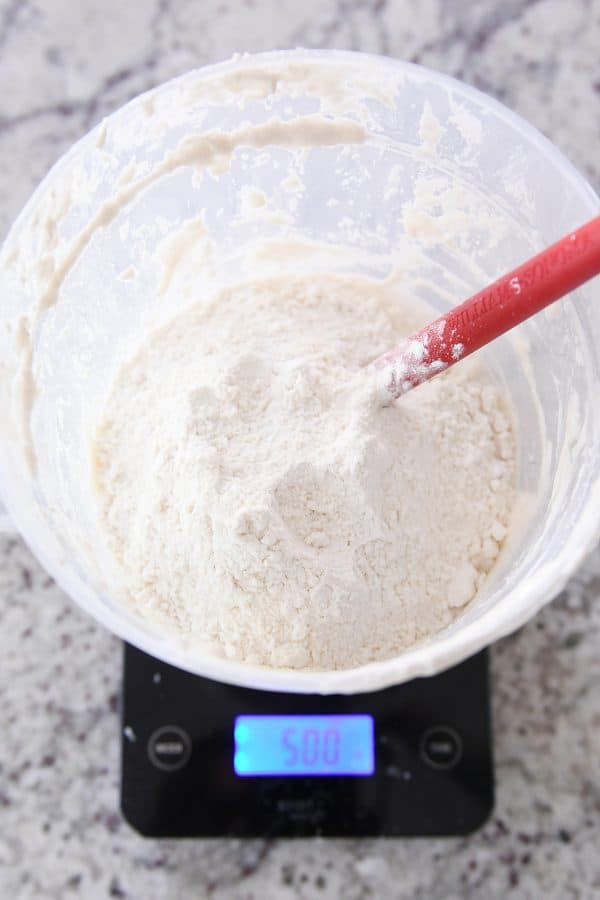
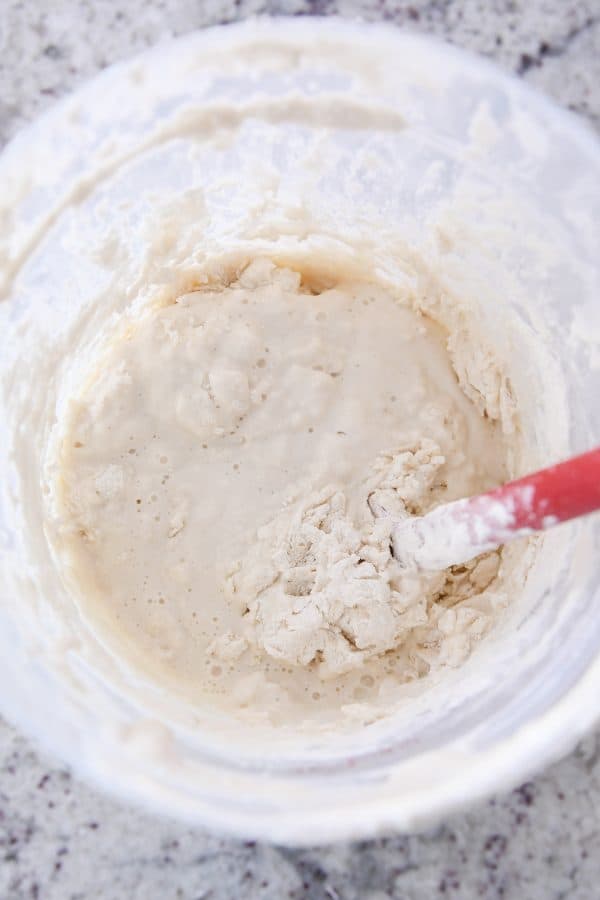
I mix it all up. The consistency should be thick but pourable (not runny and thin and not so thick that it’s becoming a dough).
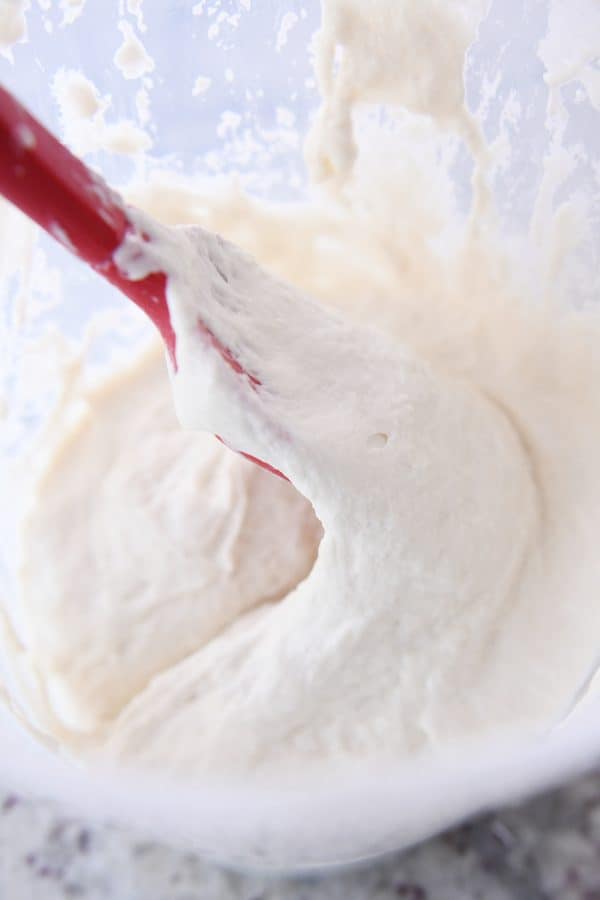
And then I cover and let it sit at room temperature until it is doubled and bubbling, about 4-8 hours depending on the temperature of my kitchen.
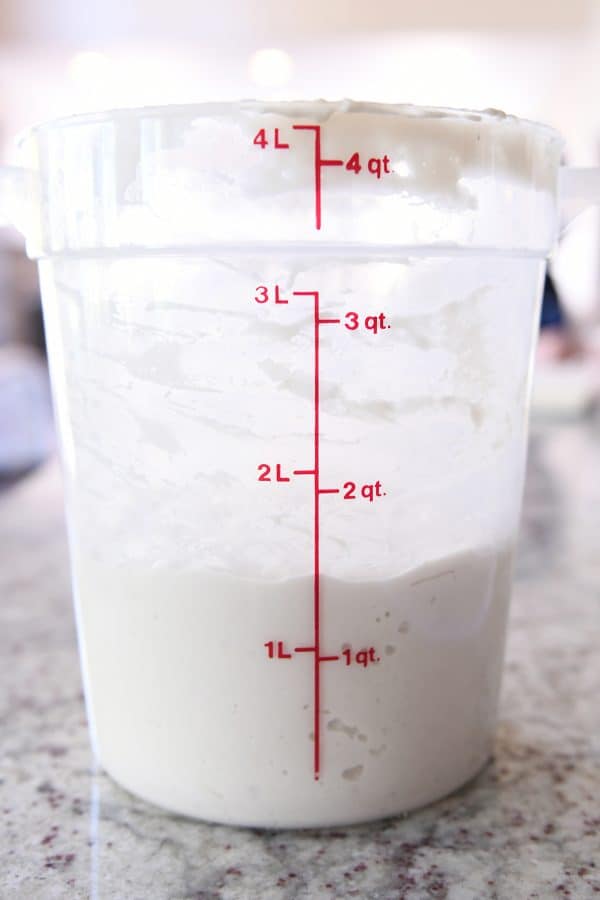
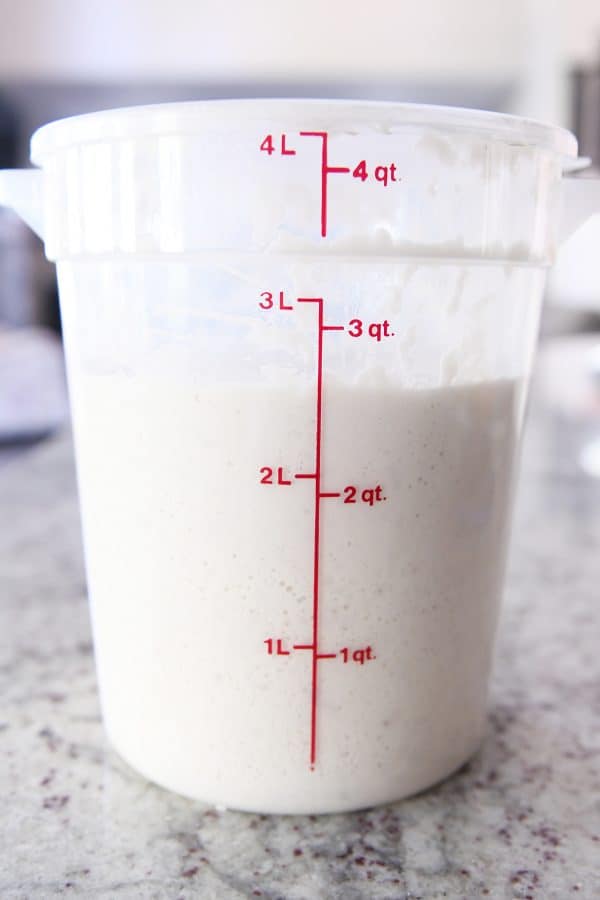
At this point, I use it in a recipe that calls for fed sourdough starter OR I pop it straight back into the fridge to live it’s best laid back life until I decide to use it again.
*This is the 4-quart container I have and use* {aff. link}
How to Bake with a Sourdough Starter
Sourdough recipes will usually indicate whether the sourdough starter called for in the recipe needs to be fed or whether it can be discard.
Fed sourdough starter is sourdough starter that has recently been fed with flour and water; it is bubbly, active and has doubled in size.
Discard sourdough starter is sourdough starter straight from the fridge or counter that hasn’t been fed in a while. It’s sluggish and a little sleepy.
Again, there are a million and a half resources and recipes on the internet for how to bake with sourdough.
But this is the lazy girl’s way to use my sourdough starter:
- I almost always use recipes that call for sourdough discard. It doesn’t require any planning on my part, and the sourdough recipes are incredibly delicious.
- I use my sourdough starter in tons of recipes on my site that aren’t specifically sourdough recipes – it adds flavor and the most amazing texture to breads.
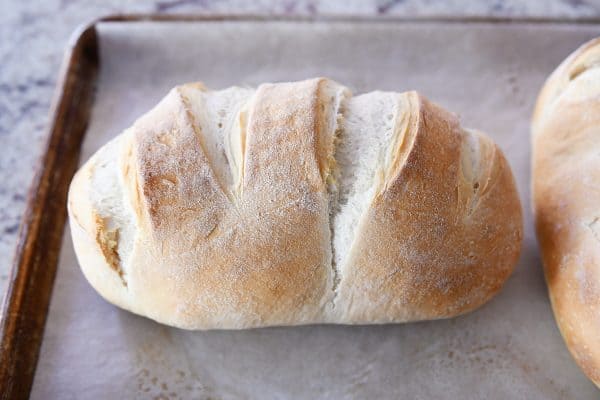
My Favorite Sourdough Discard Recipes
These are the four recipes I make 99% of the time:
- Sourdough waffles or pancakes (this recipe requires an overnight rest, but it’s so worth it – I make these waffles once a week at least)
- Sourdough pizza crust (incredible flavor, incredible texture)
- Sourdough chocolate cake (literally one of the best chocolate cakes on the whole planet earth and one of the main reasons I continue to keep a starter)
- Rustic sourdough bread or basic sourdough bread (these recipes still call for a bit of yeast, but it is perfect for beginning sourdough bread bakers, and the bread is phenomenal and foolproof)
Clearly I have a soft spot in my heart for King Arthur Flour sourdough recipes. They’re amazing.
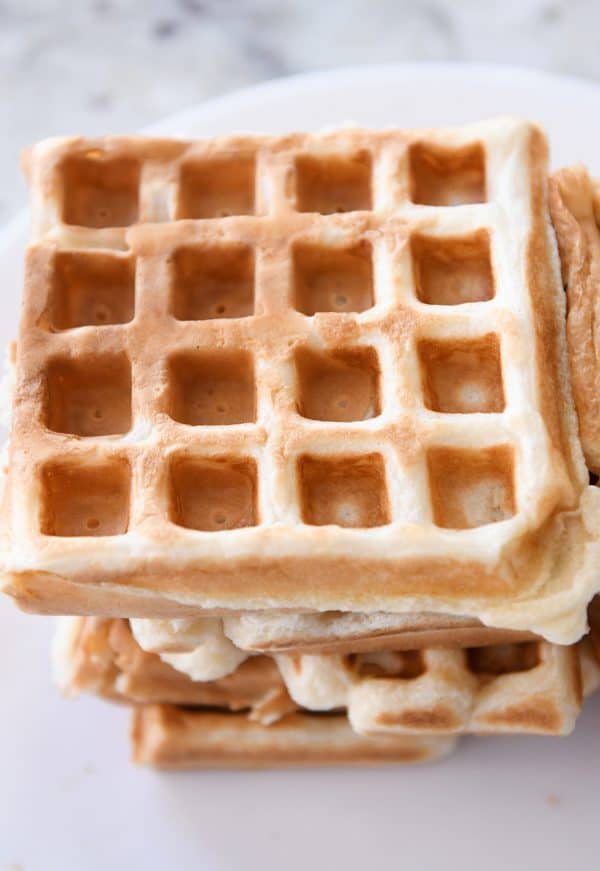
Little Spoon Farm has a ton of sourdough discard recipes as well. The sourdough biscuits are really good.
If you want to make sourdough bread without yeast, here are three great resources:
- Bless This Mess (Melissa’s) Sourdough Bread Recipe (super popular recipe!)
- King Arthur Flour’s No-Knead Sourdough Bread
- The Clever Carrot’s Beginner Recipe

How to Use Sourdough Starter in Regular Recipes
This is probably the easiest and laziest way I use my sourdough starter recipe.
I often pull it out of the refrigerator and scoop a big dollop into a bread recipe I’m already making (that doesn’t call for sourdough starter).
This is not an exact science, but my general rule of thumb is for every cup of sourdough starter, decrease the liquid by 1/2 cup and the flour by 1/2 cup.
Remember to add remaining flour by look and feel until a soft, supple, stretchy dough is formed that clears the sides of the bowl. Don’t worry about the exact flour amounts in a recipe; those can vary based on where you live, how you measure flour, etc.
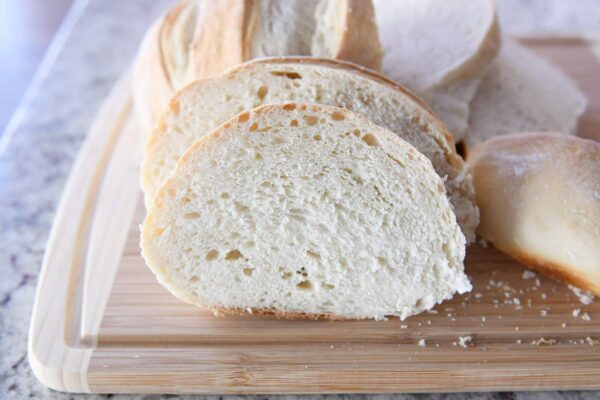
Here are a few recipes I’ve had great success tossing sourdough starter into:
I often also scoop some sourdough starter into this white sandwich bread and this small batch whole wheat bread.
Why use sourdough starter in regular recipes?
Well, for one, it adds really great flavor. And also, sourdough starter produces really soft, stretchy bread dough and deliciously tender baked bread.
Mostly, it’s a great way to use sourdough starter regularly – which in turn means your sourdough starter gets fed regularly. And if you haven’t heard, sourdough is kind of good for your gut.
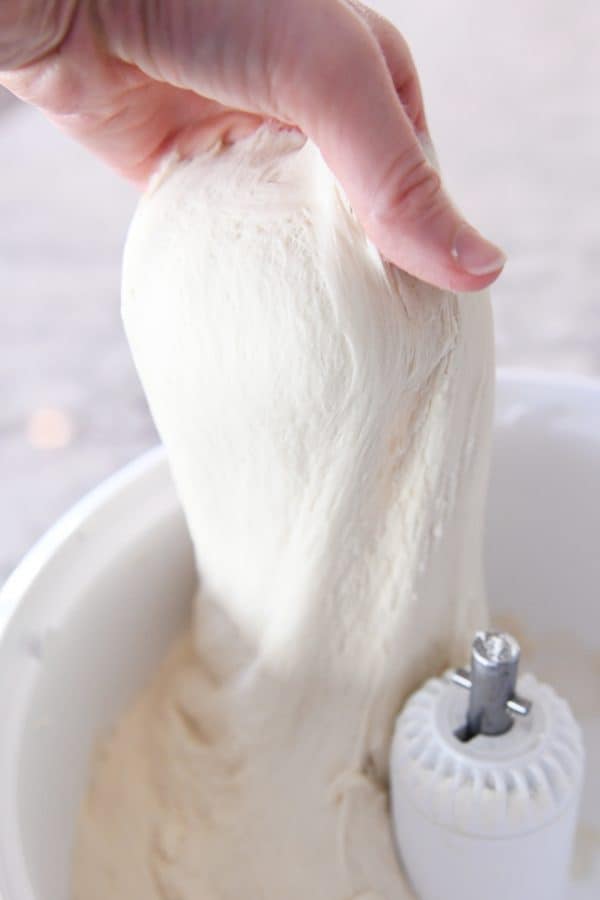
Lessons Learned from Sourdough
Mostly, what I’ve learned from tinkering around with sourdough starter over the years is that it’s really, really hard to mess it up.
Also, I feel like a rockstar when I feed my sourdough starter, let alone use it in a phenomenal bread recipe!
It’s really handy to keep around for those times when you don’t have yeast.
I love that it’s a way to challenge myself in the kitchen without spending a lot of money and time since I often use it in recipes I’m already making.
If you’ve been on the fence about sourdough, have wanted to dive back in after a hiatus, or need to pull that starter out of retirement from the depths of the fridge, hopefully this post will be a good starting place to work with sourdough without any stress!
Disclaimer: I am a participant in the Amazon Services LLC Associates Program, an affiliate advertising program designed to provide a means for me to earn fees by linking to Amazon.com and affiliated sites. As an Amazon Associate I earn from qualifying purchases.

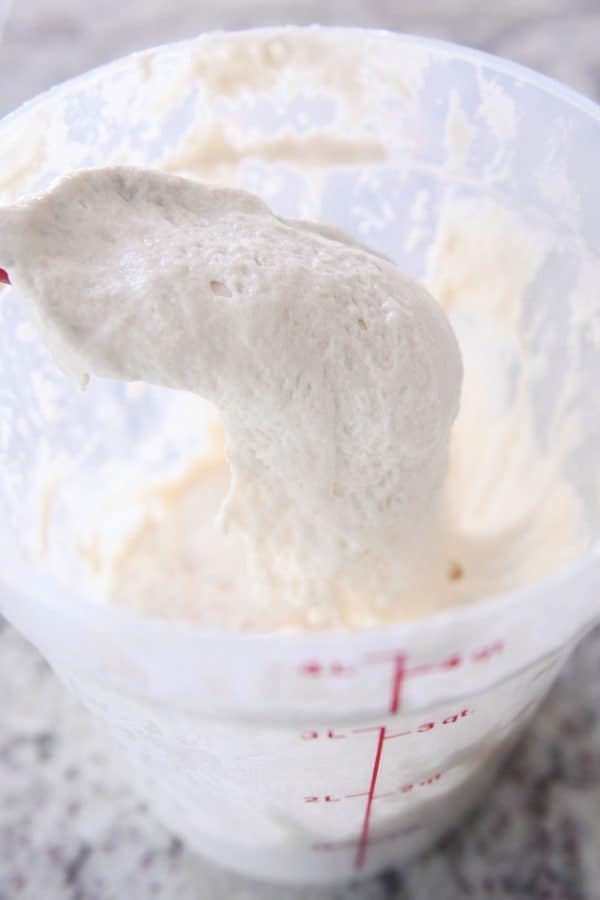
Hi Mel,
Both of the recipe links you listed for “discard sourdough,” Rustic Sourdough Bread” and “Basic Sourdough Bread” ask for sourdough starters. Do you just use discard sourdough anyway? I’m new to sourdough and just wanted to double check before I make them. Thanks!
Good question, Dani. I think both of those recipes actually do need fed sourdough starter. Sorry for the confusion. I’ll edit my blog post.